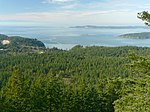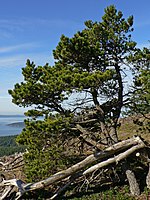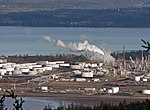Whistle Lake
Lakes of Skagit County, WashingtonLakes of Washington (state)Protected areas of Skagit County, WashingtonPuget Sound geography stubs
Whistle Lake is a small lake located within city limits in Anacortes Community Forest Lands southeast of central Anacortes, Washington. Though not directly accessible by vehicle, Whistle Lake attracts thousands of visitors each year. The lake may be reached by driving to the trailhead off Whistle Lake Road and hiking or bicycling 1.3 miles along a dirt track. The scenery surrounding the lake is pleasant and a variety of trails provide opportunities for hikers. The lake itself is used for swimming and fishing; only inflatable rafts and non-motorized boats can be used. Cliffs varying in height from 10 feet to nearly 70 feet attract cliff divers.
Excerpt from the Wikipedia article Whistle Lake (License: CC BY-SA 3.0, Authors).Whistle Lake
Kenny Oaks Trail (204),
Geographical coordinates (GPS) Address Nearby Places Show on map
Geographical coordinates (GPS)
| Latitude | Longitude |
|---|---|
| N 48.459319444444 ° | E -122.60579166667 ° |
Address
Kenny Oaks Trail (204)
Kenny Oaks Trail (204)
98221
Washington, United States
Open on Google Maps





